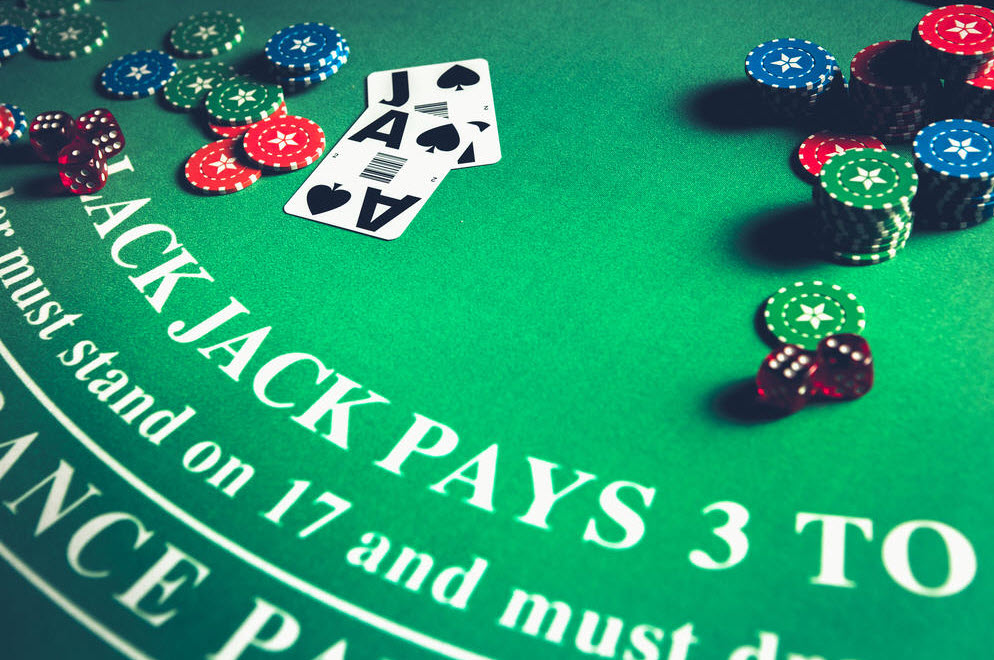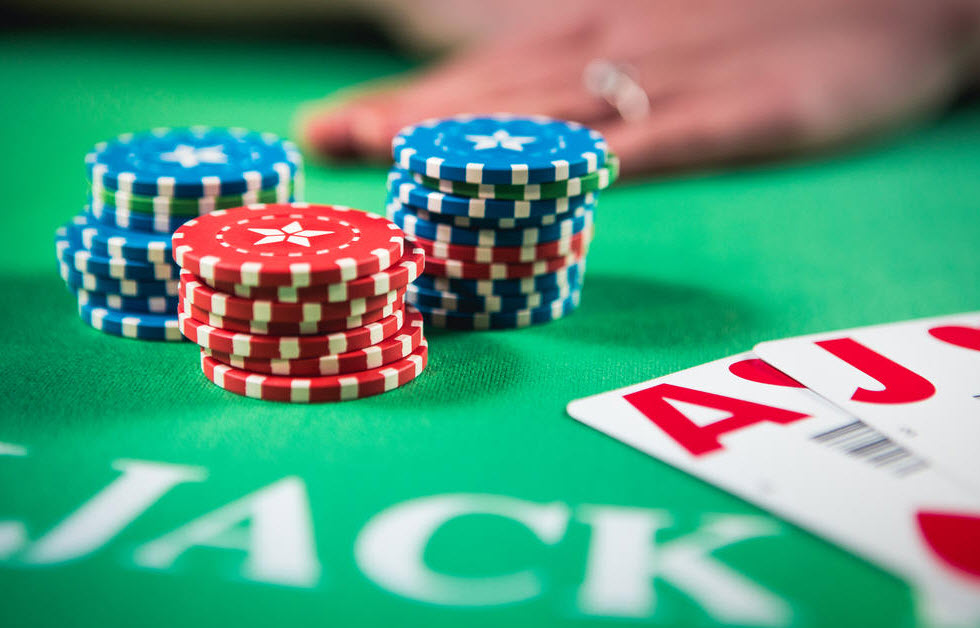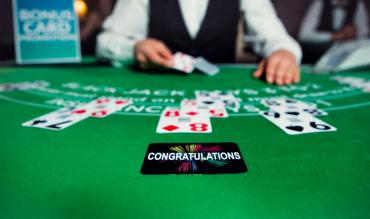Blackjack at its heart is a game for patient, methodical players with a low house edge and a good shot to win for those who know when to hit, stand, split and double down.
Casinos need to appeal to jackpot hunters too, and that's where blackjack side bets such as Blazing 777 Blackjack or Perfect and Pairs come into play. House edges are higher than on the basic game, but offer the chance at big, quick payoffs.
There are dozens of side bets available. You'll find more of them in online casinos than in live play, but they pop up in the brick-and-mortar places, too.
Blazing 777 Blackjack – often called just Blazing 7s Blackjack – and Perfect and Pairs are seeing increasing play online.
Poker & Pairs
Let's take Poker and Pairs first. It's really two side bets. You can play either, both, or opt to skip them and just play blackjack.
If you make the Pairs side bet, sometimes called "Perfect Pairs," you win if your first two blackjack cards are the same denomination.
A variety of Perfect Pairs pay tables are available, but the one that's riding a wave of online casinos at the moment looks like this.
| Hand | Pay |
| Perfect Pair (same denomination and suit) | 30-1 |
| Same color pair | 10-1 |
| Mixed color pair | 5-1 |
It's easy to play and deal. You'll have a winner in about 7.5% of hands, with 3,9 percent being mixed pairs, 1.9 percent being same-color pairs and 1.7% being perfect pairs.
The house edge of 3.4% is one of the better deals you'll get among side bets.
The Poker side bet is a three-card poker variation based on your first two blackjack cards and the dealer's face up card.
The pay table looks like this:
| Hand | Payoff |
| Suited three of a kind | 100-1 |
| Straight flush | 35-1 |
| Unsuited three of a kind | 33-1 |
| Straight | 10-1 |
| Flush | 5-1 |
There are 22,100 possible three-card hands in which card order doesn't matter. Four are suited threes of a kind, with 48 straight flushes, 48 non-suited threes of a kind, 720 straights and 1,096 flushes.
That's 1,916 winners per 22,100 hands. With payoffs of up to 100-1, a single win can be a bonanza, but the house edge of 10.9% is on the steep side.

Blazing 7s Blackjack
This game plays off Bally Technologies' pioneering three-reel progressive Blazing 7s slot machine that was introduced in the early 1970s. Bally later merged into Scientific Games, now called Light & Wonder, the owner of the 777 blackjack side bet.
Payoffs depend on how many 7s are dealt, but there are multiple versions. In some casinos, it's a $1 side bet. In others, it's $5.
Like the Blazing 7s slot, the side bet involves a progressive jackpot. It can run into tens of thousands, or even hundreds of thousands of dollars, depending on how much play there has been since the last jackpot. A portion of each wager is added to the pot until it's won. Then the pot is reseeded at a rollover amount and begins building again.
Payoffs depend on the number of 7s in a three-card hand. Which three cards depend on which version of the game you play. Most commonly, the three cards used are the player's first two cards plus the dealer's up card. Some tables use the player's first two cards plus a third card if the player draws.
The first method is better for the player. You can't get a third 7 if you don't draw, and that sometimes conflicts with basic strategy decisions.
Either way, there are several available pay tables. Here are three I've seen:
| Pay table 1 | Pay table 2 | Pay table 3 |
| Three suited 7s, jackpot | Three 7s of diamonds, jackpot | Three 7s of diamonds, Mega jackpot |
| Three 7s of diamonds, Mega jackpot | Three suited 7s of hearts , clubs or spades, 10% of jackpot | Three suited 7s of hearts, clubs or spade, Major jackpot |
| Three same color 7s, 500-for-1 | Three same color 7s, Minor jackpot | |
| Three mixed 7s, 200-for-1 | Three mixed 7s, 200-for-1 | Three mixed 7s, 200-for-1 |
| Two 7s, 25-for-1 | Two 7s, 25-for-1 | Two 7s, 25-for-1 |
| One 7, 2-for-1 | One 7, 2-for-1 | One 7, 2-for-1 |
In the first two versions, there is one progressive jackpot, with the top payoff being the full pot and the second biggest payoff as 10 percent of the pot. The third version builds three separate jackpots, with the Mega having the highest starting point, Major the second highest and Minor third.
All pay tables start at 2-for-1 if the three cards include one 7, then increase to 25-for-1 for two 7s and 200-for-1 on most three sevens of mixed suits and/or colors.
Note that payoffs are "for-1." That means a return of your bet is part of your payoff. If you bet $5 and get two 7s, the house keeps your initial $5 but pays you $10. That's different than a "to-1" payoff as we see on most table games. A basic win on blackjack is 1-to-1, so you keep your $5 bet and get $5 in winnings. A 2-for-1 payoff is the same as a 1-to-1 payoff.
The differences come when three 7s are of the same suit or color.
In one pay table, three 7s of the same color pay 10% of the progressive jackpot, while three 7s of the same suit pay the entire jackpot.
Whenever a pay table includes a progressive jackpot, the house edge is variable. The higher the progressive payoffs, the lower the house edge.
At wizardofodds.com, where Michael Shackelford details the math behind just about any casino game you're likely to encounter, he details how that works.

Inside the Odds
Assume a common six-deck game -- you need to have a multi-deck game to make three 7s of the same suit possible. Next, assume the most common version of Blazing 777 Blackjack, which uses your first two cards and the dealer up card.
Let's use pay table 2 as an example, with Shackelford's statistics. The fixed, non-progressive payoffs on one 7, two 7s, three mixed 7s or three same color 7s bring back to players 48.03% of everything they wager.
On $1 side bets, each $1,000 in the progressive meter adds 0.52% to the average return. On $5 side bets, each $1,000 adds 0.1% to the return.
So with a $10,000 jackpot, the average return on a $1 side bet is 53.2%, while on a $5 bet the return would be 48.7%.
To reach a break-even point with a 100% average return, the jackpot would have to reach $100,216.92 with a $1 bet or $500,084.62 with a $5 bet.
Numbers vary with each pay table, each side bet and the number of decks used, but you get the idea. The jackpots have to be very large for a side bettor to get a house edge as low as the less than 1% a basic strategy player gets on the main game of blackjack.
And even if the jackpots are big enough for a low edge, the volatility is very high. Big jackpots don't make 7s come up any more often. On average in a six-deck game, you'll be dealt a winner only 14.8% of the time, broken into 14.2 percent for one 7, 5.3% for two 7s, 0.3% for three mixed 7s, 0.07% for three same-color 7s and 0.0015% for three same-suit 7s.
In live casinos, it's possible for card counters to improve their odds by tracking how many 7s have been dealt and betting only when there is a high concentration of 7s to be played. Online play, where fresh shuffles for every hand are common, takes card counting out of the picture.
That leaves Blazing 777s Blackjack as a roller-coaster ride of a bet with high volatility and usually a high house edge. Those who love the steadiness and strategy for regular blackjack will choose to skip the side bet, but those who want a chance at a big payday will take a flier.


